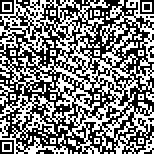| 摘要: |
| [摘要] 目的 比较远程失眠认知行为治疗(CBT-I)与面对面CBT-I对失眠患者睡眠影响的差异,研究远程CBT-I的有效性。方法 招募2019年3月至2023年5月重庆市中医院睡眠门诊收治的108例慢性失眠障碍患者,经剔除后最终纳入74例进行分析,其中远程组38例,面对面组36例。使用失眠严重指数(ISI)、匹兹堡睡眠质量指数(PSQI)评估失眠症状以及睡眠质量,使用广泛性焦虑障碍问卷(GAD-7)和患者健康问卷(PHQ-9)评估患者焦虑和抑郁情绪,使用睡眠信念和态度量表(DBAS-16)评估患者的不合理睡眠认知,使用格拉斯哥睡眠努力量表(GSES)量化患者的睡眠努力。比较两组患者的治疗效果。结果 在干预前和干预后,两组ISI、PSQI、GAD-7、PHQ-9、DBAS-16、GSES评分比较差异均无统计学意义(P>0.05)。干预后,面对面组的各问卷得分均显著低于干预前(P<0.05),远程组除GAD-7外的各问卷得分亦显著低于干预前(P<0.05)。结论 远程CBT-I可有效改善中国失眠患者的夜间及日间症状、睡眠不良信念和行为,是可扩大CBT-I获得性的方法。 |
| 关键词: 慢性失眠障碍 失眠认知行为治疗 远程 面对面 |
| DOI:10.3969/j.issn.1674-3806.2024.01.06 |
| 分类号:R 741 |
| 基金项目:重庆市自然科学基金项目(编号:cstc2020jcyj-msxmX1050);重庆市市级中医重点专科建设项目(渝中医[2022]4号) |
|
| A study on the therapeutic effect of telehealth cognitive behavioral therapy for insomnia on chronic insomnia disorder |
|
CHEN Junjun1, LI Fan2,3 ZHAO Wenrui1, GAO Jie1, JIANG Chunfeng1, ZHAO Yuhua1, HU Chen1, LI Chenyu1
|
|
1.Department of Neurology, Chongqing Traditional Chinese Medicine Hospital, Chongqing 400021, China; 2.Department of Neurosurgery, Central Hospital of Dalian University of Technology, Liaoning 116033, China; 3.Faculty of Medicine, Dalian University of Technology, Liaoning 116024, China
|
| Abstract: |
| [Abstract] Objective To compare the differences in the effects of telehealth cognitive behavioral therapy for insomnia(CBT-I) and face-to-face CBT-I on sleep in insomnia patients, and to study the effectiveness of telehealth CBT-I. Methods A total of 108-patients with chronic insomnia disorder who were treated in the Outpatient Service of Sleep Medicine of Chongqing Traditional Chinese Medicine Hospital were recruited, and after excluding some patients, 74 cases were ultimately included and analyzed, including 38 patients in the telehealth group and 36 patients in the face-to-face group. The insomnia symptoms and sleep quality were assessed using Insomnia Severity Index(ISI) and Pittsburgh Sleep Quality Index(PSQI). The patients′ anxiety and depression were assessed using Generalized Anxiety Disorder-7(GAD-7) and Patient Health Questionnaire-9(PHQ-9). The patients′ irrational perceptions of sleep were assessed using Dysfunctional Beliefs and Attitudes about Sleep Scale-16(DBAS-16). Glasgow Sleep Effort Scale(GSES) was used to quantify the patients′ sleep effort. The therapeutic effects were compared between the two groups. Results There were no significant differences in ISI, PSQI, GAD-7, PHQ-9, DBAS-16 and GSES scores between the two groups before and after the intervention(P>0.05). After the intervention, the scores of each questionnaire in the face-to-face group were significantly lower than those before the intervention(P<0.05). Except for those of GAD-7, the scores of each questionnaire in the telehealth group after the intervention were also significantly lower than those befor the intervention(P<0.05). Conclusion Telehealth CBT-I can effectively improve the nocturnal and daytime symptoms, poor sleep beliefs and behaviors of Chinese insomnia patients, and it is a method to expand the accessibility of CBT-I. |
| Key words: Chronic insomnia disorder Cognitive behavioral therapy for insomnia Telehealth Face to face |

